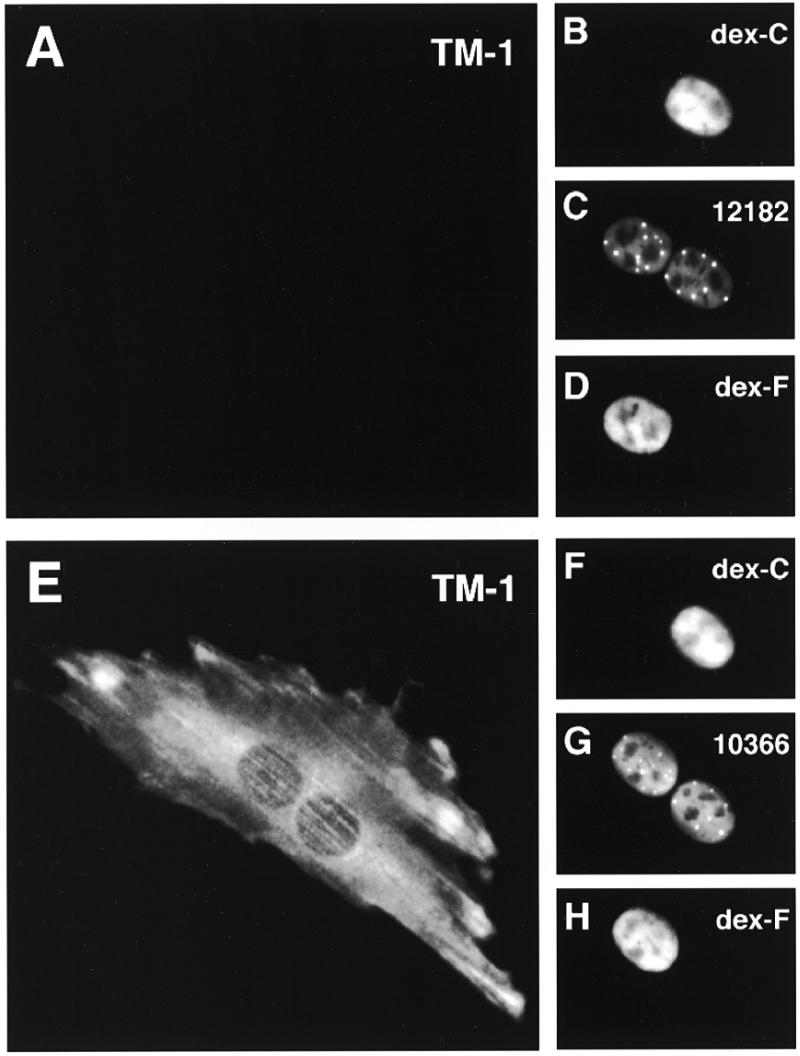Figure 7.

Shuttling P=S ODNs are able to exert their antisense activity. P=S ODN 12182–Texas Red (60 µM) (antisense) or 10366–XRITC (control) and 70 kDa dextran–Cascade Blue (dex-C) were injected into one nucleus of binucleate Ref52 cells. Two hours later the same cells received a second injection into the other nucleus with a vector encoding a tagged form of the tropomyosin TM-1 target gene of 12182–Texas Red together with 70 kDa dextran–fluorescein (dex-F). Cells were fixed 3 h after this second injection and labeled for expression of TM-1 with an antibody against the protein tag and secondary antibodies coupled to Cy5. The antisense P=S ODN abolished TM-1 target gene expression (A). Hybridization was only possible if the P=S ODN moved out of the injected nucleus to contact its target RNA in the cytoplasm or the second nucleus. The control P=S ODN did not interfere with TM-1 expression (E). The fluorescent images for target gene expression TM-1 (A and E), dextran–Cascade Blue (B and F), the P=S ODNs 12182–Texas Red (C) or 10366–XRITC (G) and dextran–fluorescein (D and H) are shown. Bar 10 µm.
